HomeReviewsWorkers & Resources: Soviet Republic
Workers & Resources: Soviet Republic 1.0 review: reject tradition, embrace a fundamental revolution in city buildingThat’s a common logistical fallacy
That’s a common logistical fallacy
Image credit:Rock Paper Shotgun/Hooded Horse
Image credit:Rock Paper Shotgun/Hooded Horse
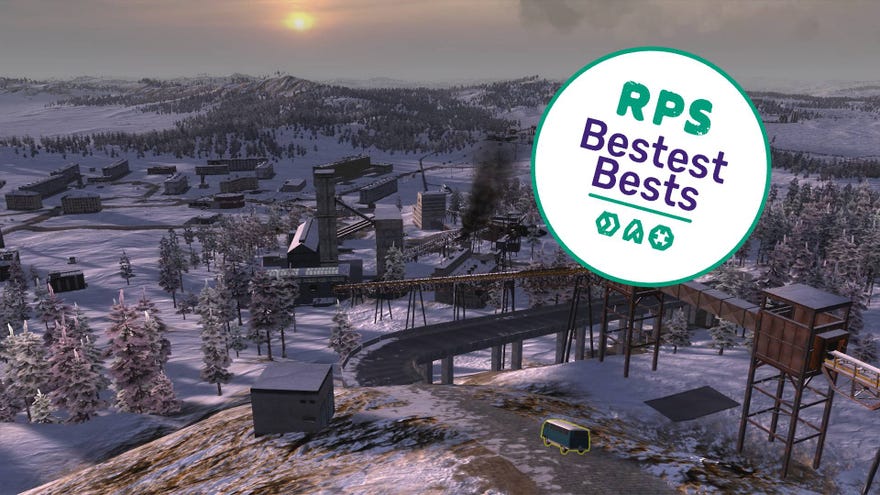
If nothing else,Workers & Resources Colon Soviet Republicwill give anyone an appreciation of the incredible complexity and difficulty of building and maintaining a city. On another day I might call it the first ever citybuilding game.
Even a Settlers orFactoriocannot match its extreme focus on logistical simulation. It isn’t realism for its own sake (look no further than the automated vehicles and the ludicrous citizen behaviour to refute that), but a fundamentally different interpretation of what city building means. It’s about co-ordinating all your pieces so they’ll be in the right place to support each other, and how the whole is all that matters, but that whole will fail if you don’t organise its parts. It is… a lot. It’s too much at times. But if you have those times, it will occupy them like nothing else.
In other city builders, you can enable recycling to make pollution go down 10%. In W&R, populated buildings fill bins with “mixed waste”. You must organise rubbish trucks, build them a depot, and a site to dump their collections at. But it’s better to build centralising bins here and there, then later a transfer station to centralisethoseat for mass collection. The theme isn’t “lol concrete commies”: it’s centralisation all the way down.
Image credit:Rock Paper Shotgun/Hooded Horse

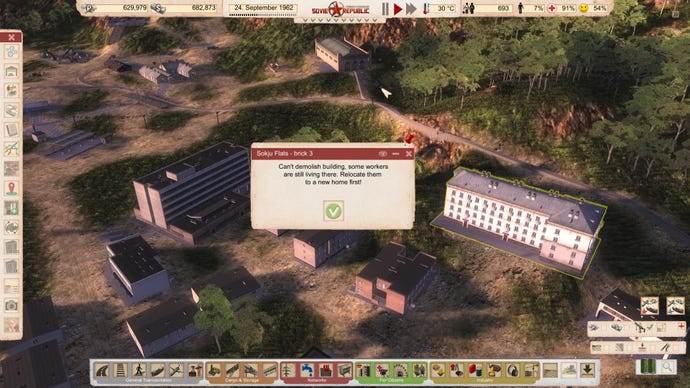
Image credit:Rock Paper Shotgun/Hooded Horse
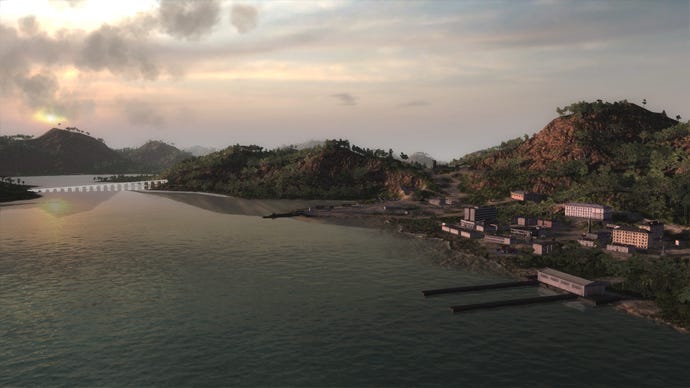
There’s more. Research (at one of three types of university) unlocks a depot that scours the waste to salvage building aggregate. More research unlocks more facilities to put the remainder through, recovering different materials in the process. Better still to research sorting, so people will separate it at home. This recovers a bigger range of resources (the exact mass of each material in every bin is constantly tracked), and this isn’t half of the detail of one service. Every step means moving material, which means acquiring, fuelling, and instructing vehicles specialised for different resources, and integrating them with the hundred other things you need to provide for your workers in return for all their toil. Being in charge of everything means exactly everything.
This is not a game about painting zones or lowering taxes. This is a game where providing running water (instead of tanker deliveries), immediately turns people into sewage factories. There are trucks for that, too, and pipes and pumps. Vehicles and buildings wear out and need repair crews, or a scrapyard to recover their ingredients. Demolishing a mine or pulling up a footpath (which are the most important things in the world) requires vehicles and workers to dismantle them and take away multiple substances. You can’t demolish an occupied house at all. There’s no “upgrading” a building. If you want a bigger one you must cover for its function while you wait for crews to tear it down and build it anew, a multi-stage process necessitating imports, production, and delivery of a dozen more materials.
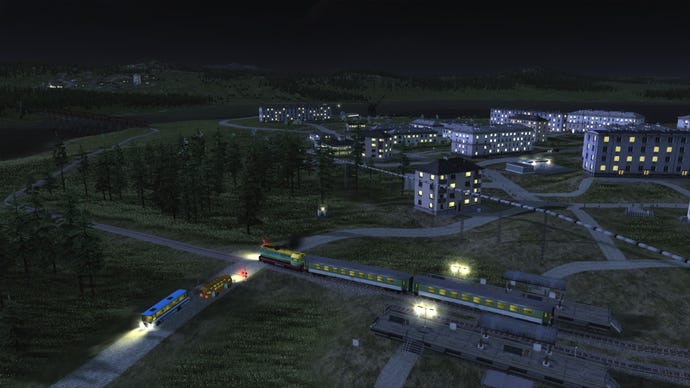
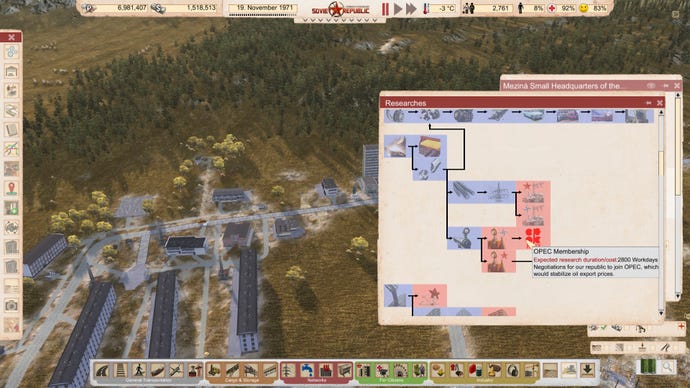
Let’s say it: this sounds like a nightmare. Even after playing on and off for several years, with mods on top (which I’ve played without for this review, andas noted, it plays much the same), it’s sometimes paralysing. But W&R wants you to enjoy yourself.
Though its popular “realistic mode” leans fully into doing everything from scratch, a special interest in simulating All The Things isn’t mandatory. You’re free to switch many challenges on and off at will. Simplify electricity if it bores you, teleport stock into shops to save time, activate infinite money. You can’t automate everything like aDistant Worlds, but you can tone down its demands. God help you, in fact, if you never teleport-build a temporary wind turbine for the millisecond of power needed to activate a satellite town, or use saves and cheats to test a layout rather than risk dismantling and rebuilding an entire district with one train station three pixels to the left.
Play it however you please, becausethat’s what games are for, and because my god can it be fussy. If ever I pity a town planner, it’s when a decision to plop a quick logging camp down turns into two hours of moving and microscopically rotating buildings and the fifteen or so types of conveyance that move things between them, each with its quirks. It’s more like thirty if you count every type of electrical line and road, which cost different materials, thus strain different industries. Every new build ripples outwards with consequences and competing ideas.
Image credit:Rock Paper Shotgun/Hooded Horse
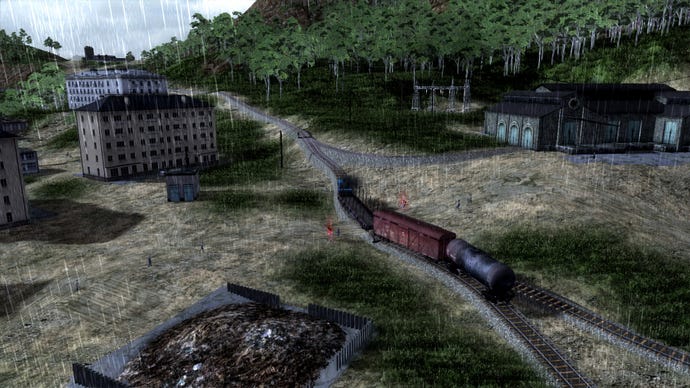
Dramatic terraforming powers present huge and granular possibilities but endless, endless faffing around trying to get the bloody conveyor to go where it will definitely go. But only if you figure out the exact order needed to place everything, then coax the right angles and lengths out of a treacherous, counter-revolutionary road. The logic of where things fit and overlap is fickle and sometimes maddening. And let’s not get started on its four completely unconnected time systems, or the alien logic of workers who will starve if a supermarket’s lights go out, but teleport home after a shift.
Many of you already know you would hate or have no time for it. You ought to trust your own instincts. But some of you are going to adore it like I do. Play it in the simplest modes at first, spend a few disposable towns to paythe depositof learning its basics, its still scratchy UI, and its esoteric underlying logic. Give it some room, and you’ll be glad you let it take over your life.
Biomes DLC bonus mini-review
3Division and publisher Hooded Horse provided a pre-release build of Biomes, the launch DLC. It is, and I say this with love: fine.
Image credit:Rock Paper Shotgun/Hooded Horse
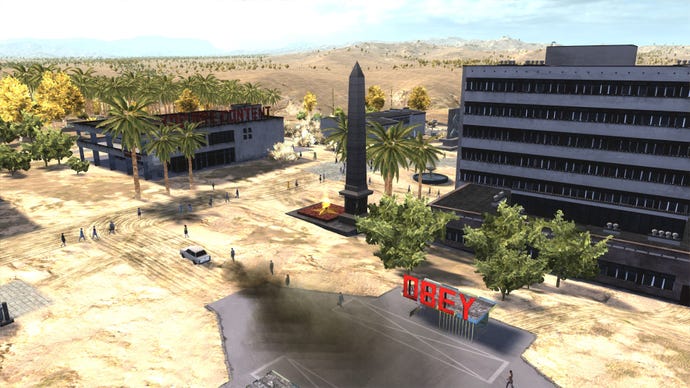
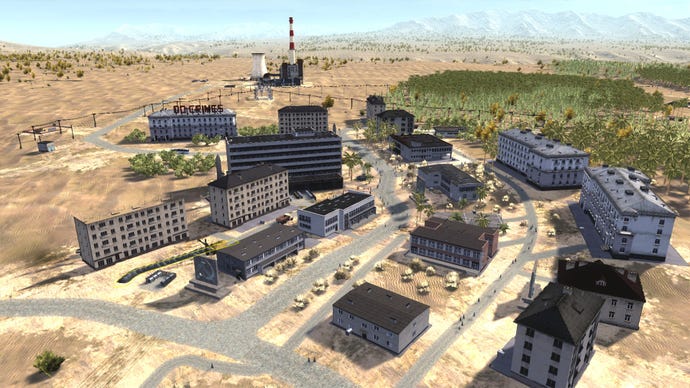
It’s disappointing that there are only three maps (no random maps at present), and the new themed buildings are usable only when map editing. I imagine its thriving mod scene will fill in those gaps. Biomes is a nice bonus. A bit underwhelming if you want to go all in, but completely skippable if you’re fine with the default setting. Thus: it’s fine, with potential to become more appealing over time.